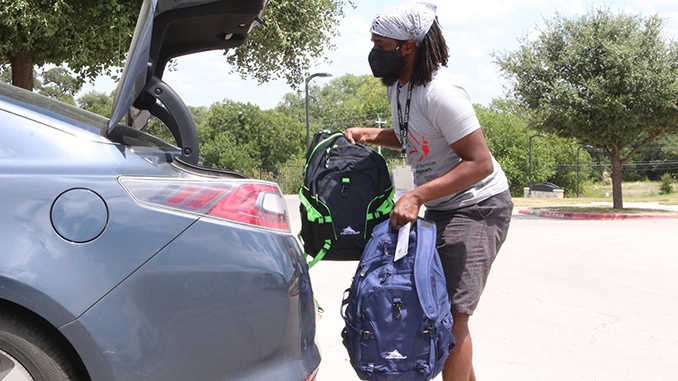As the pandemic rages deep into a second year, Texas child welfare officials are investing $1 million in a community-based strategy to support families who may be headed toward crisis, with hopes of diverting children away from the foster care system.
The family resource centers combine an array of offerings in one location — from parent support groups and classes, to help securing housing or finding a job. The goal is to mitigate stressors parents face, and to meet their families’ needs well before child protective services ever knocks on the door.

“By focusing on protective factors — teaching parents to be resilient, seek help in a crisis, connect with their community, learn positive parenting — family resource centers help prevent abuse and neglect long before they become a problem,” said Sasha Rasco, who works for the state of Texas as the chief prevention and community well-being officer.
Five local foster care providers and children’s organizations spread across the sprawling Lone Star State will split the $1 million grant, including public and private agencies in Cameron, Harris, Hidalgo and Travis counties.
“Whether you’re a border community, Panhandle, Metroplex or Hill Country, Texas communities are stepping up to help their own,” said Katie Olse, CEO of the the Texas Alliance for Child and Family Services, of the effort.
The new resource centers are expected to serve more than 1,500 families over the next four years, according to Texas’ Department of Family and Protective Services. The state agency is funding the initiative using pandemic relief dollars earmarked for community-based child abuse prevention.
The family resource center concept has gained increasing popularity and funding over the past year. Amid a crushing global health crisis that has hit children and families especially hard, these hubs of support have been held up as a promising “upstream” intervention — helping families before they come into the crosshairs of the child welfare system.

As The Imprint reported earlier this month, Damali Flippin turned to a Washington, D.C., resource center to find support for the anxiety and depression that had grown deeper during the pandemic.
During a virtual public event highlighting the community-based model, Flippin said the support she found there changed her life. She got help building a resume and finding a job, and enrolled her 6-year-old daughter in art and cooking classes.
But perhaps most importantly, she said, was the sense of connection.
“I don’t feel alone anymore,” she told participants.
There are more than 3,000 of these centers nationwide, serving more than 2 million people, according to the National Family Support Network, and the numbers are growing. Ten family resource centers opened in Washington, D.C., in October 2020, and New York City recently announced it would expand from three “family enrichment centers” to 30 sites, located in parts of the city most impacted by COVID-19.
Parent advocates in New York have raised concerns about the model, which is typically overseen by the same child welfare agencies that have the power to remove children from their parents. They say that conflicted role puts vulnerable families in jeopardy while they are seeking help.
A 2021 report from Rise Magazine, an organization run by parents who have experienced the child welfare system, puts it bluntly: “To be clear, services administered by the family policing system are, by design, not what parents want.”
Among their concerns are child protective services having access to information gathered about families at these resource centers, and the idea of having “organizations steeped in dynamics of threat, coercion, monitoring and control to be involved in their family lives.”
Still, figures from other states that have used this model have shown promising results. The Vermont Parent Child Center Network reported that in 2010, the state saved more than $200,000 for every family that participated in its services. In Teller County, Colorado, officials report a 57% decrease in calls to the child abuse hotline since investing in family resource centers.

In Texas, Olse’s organization will partner with the state child welfare agency to provide technical assistance to grantee organizations, and to help ensure the new resource centers follow national standards while tailoring services to each community served.
“This is an exciting opportunity to fund family-focused centers of support based on local communities’ needs,” said Rasco of the Department of Family and Protective Services. “Each family resource center will be just as unique as the Texas community it serves.”





